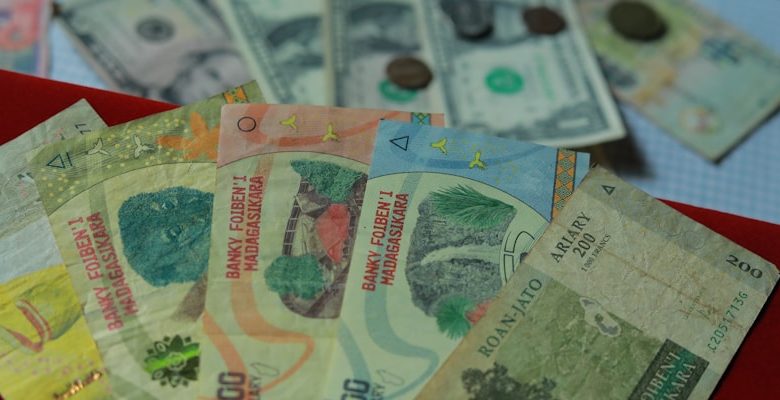How to Identify Scam Coins and Tokens

- Understanding the Risks of Investing in Cryptocurrency
- Key Indicators of a Potentially Fraudulent Coin or Token
- Common Scam Tactics Used in the Cryptocurrency Market
- Research Tools to Help Identify Legitimate Projects
- Red Flags to Look Out for When Evaluating New Cryptocurrencies
- Steps to Take if You Suspect You’ve Fallen Victim to a Scam Coin
Understanding the Risks of Investing in Cryptocurrency
Investing in cryptocurrency can be a lucrative opportunity, but it also comes with its fair share of risks. It is essential to understand these risks before diving into the world of digital assets. One of the primary risks of investing in cryptocurrency is the high volatility of the market. Prices can fluctuate dramatically in a short period, leading to significant gains or losses for investors.
Another risk to be aware of is the lack of regulation in the cryptocurrency space. Unlike traditional financial markets, the cryptocurrency market is largely unregulated, making it susceptible to scams and fraudulent activities. Investors may fall victim to Ponzi schemes or pump-and-dump schemes, where the value of a coin or token is artificially inflated before crashing.
Additionally, security is a major concern when it comes to investing in cryptocurrency. Hacks and cyber attacks on cryptocurrency exchanges and wallets are not uncommon, leading to the loss of funds for investors. It is crucial to take precautions to secure your investments, such as using reputable exchanges and secure wallets.
Moreover, the lack of transparency in the cryptocurrency market can make it challenging to distinguish legitimate projects from scam coins and tokens. Ponzi schemes, fake ICOs, and other fraudulent activities are prevalent in the market, making it essential to conduct thorough research before investing in any project.
In conclusion, while investing in cryptocurrency can be profitable, it is crucial to understand and mitigate the risks involved. By being aware of the market’s volatility, lack of regulation, security concerns, and potential scams, investors can make more informed decisions and protect their investments in the long run.
Key Indicators of a Potentially Fraudulent Coin or Token
Some key indicators that may suggest a coin or token is fraudulent include lack of transparency, promises of high returns with little risk, unclear or unrealistic whitepapers, fake team members or advisors, and a sudden surge in social media hype without any substance to back it up.
Another red flag to watch out for is a lack of a clear use case or utility for the coin or token. If a project cannot clearly explain how their token will be used within their ecosystem, it is likely a scam. Additionally, if the team behind the project has a history of failed or fraudulent projects, this should raise suspicions.
Furthermore, be wary of coins or tokens that use aggressive marketing tactics, such as constantly shilling on social media or pushing for quick investments. Legitimate projects typically focus on building a solid foundation and delivering on their promises rather than hyping up their token.
In conclusion, it is crucial to do thorough research before investing in any coin or token. By being aware of these key indicators of fraudulent projects, you can better protect yourself from falling victim to scams in the crypto space.
Common Scam Tactics Used in the Cryptocurrency Market
There are several common scam tactics used in the cryptocurrency market that investors should be aware of in order to identify scam coins and tokens. One common tactic is the creation of fake websites or social media accounts that mimic legitimate cryptocurrency projects. These fake websites often have subtle differences from the real ones, such as misspelled words or slightly different URLs.
Another common tactic is the use of pump and dump schemes, where scammers artificially inflate the price of a cryptocurrency by spreading false information or hype, only to sell off their holdings once the price has risen. This can lead to unsuspecting investors losing a significant amount of money.
Scammers also often use phishing emails or messages to trick investors into giving up their personal information or access to their cryptocurrency wallets. These messages may appear to be from legitimate sources, such as exchanges or wallet providers, but they are actually from scammers looking to steal funds.
It is important for investors to do their due diligence and research any cryptocurrency project thoroughly before investing. By being aware of these common scam tactics and staying vigilant, investors can protect themselves from falling victim to scams in the cryptocurrency market.
Research Tools to Help Identify Legitimate Projects
When researching potential investments in coins and tokens, it is crucial to utilize various tools to help identify legitimate projects. Here are some research tools that can assist you in distinguishing between scams and genuine opportunities:
- Whitepaper Analysis: One of the most important research tools is analyzing the whitepaper of a project. A whitepaper provides detailed information about the project’s goals, technology, team, and roadmap. Look for a well-written whitepaper that clearly explains the project and its potential.
- Team Background Check: Another essential step is to research the backgrounds of the team members behind the project. Look for experienced professionals with a track record of success in the blockchain and cryptocurrency industry.
- Community Engagement: Evaluate the level of community engagement surrounding the project. Legitimate projects typically have active communities on social media platforms and forums. Engage with the community to ask questions and gather more information.
- Code Review: For technical projects, conducting a code review can help assess the quality of the project’s codebase. Look for projects with transparent code that is regularly updated and reviewed by developers.
- Audits: Consider projects that have undergone third-party audits by reputable firms. Audits can help verify the security and integrity of a project’s code, smart contracts, and overall structure.
Red Flags to Look Out for When Evaluating New Cryptocurrencies
When evaluating new cryptocurrencies, it is crucial to be aware of red flags that may indicate a potential scam. One red flag to look out for is a lack of transparency. If a cryptocurrency project is not transparent about its team members, development roadmap, or technology, it may be a sign that they have something to hide. Another red flag is promises of guaranteed returns or unrealistic claims about the potential value of the coin or token.
Furthermore, be cautious of projects that have a lack of community engagement or support. A legitimate cryptocurrency project will typically have an active community of supporters who are engaged in discussions on social media and forums. If a project has little to no community involvement, it may be a sign that it is not a legitimate investment opportunity. Additionally, watch out for projects that have been involved in past controversies or scandals.
It is important to thoroughly research any new cryptocurrency before investing your hard-earned money. By being aware of these red flags and conducting due diligence, you can help protect yourself from falling victim to scam coins and tokens. Remember, if something seems too good to be true, it probably is. Stay vigilant and always prioritize the security of your investments.
Steps to Take if You Suspect You’ve Fallen Victim to a Scam Coin
If you suspect that you have become a victim of a fraudulent coin or token, it is crucial to act swiftly and decisively. There are several steps you can take to protect yourself and potentially recover any lost funds. Firstly, **contact** your financial institution to report the scam and freeze any accounts associated with the suspicious transaction.
Next, **reach out** to the relevant authorities such as the Securities and Exchange Commission (SEC) or the Federal Trade Commission (FTC) to report the fraudulent activity. Provide them with as much information as possible, including the name of the coin or token, the amount of money involved, and any correspondence you have had with the scammers.
It is also important to **notify** the cryptocurrency exchange where you purchased the scam coin or token. They may be able to provide assistance or guidance on how to proceed. Additionally, consider **seeking** legal advice to explore your options for recourse.
In the future, be vigilant and conduct thorough research before investing in any new cryptocurrency. Look for **red flags** such as unrealistic promises, lack of transparency, and a **lack** of credible team members. Remember, prevention is always better than cure when it comes to protecting yourself from scam coins and tokens.



